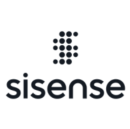When VP of Global Product Gil Sommer joined OpenX in 2022, he joined in the middle of a major sea change in the digital advertising industry: the looming loss of data from Google Chrome’s depreciation of third-party cookies.
Google Chrome is the preferred internet browser worldwide, with 60 percent of the overall browser market share, according to research from Statistica. Advertisers previously relied heavily on Chrome’s third-party cookies as precious user information, and as Google plans to completely phase out support for third-party cookies by the end of 2024, advertising products need to quickly adapt to avoid becoming obsolete.
For Sommer, discovering new ways to thrive long-term in the changing market landscape is what excites him most about being a product leader — and he’s not alone.
Matthew Lisowski, director of product management at Findigs, is eager to expand the rental platform’s fraud protection offerings in response to the rise and evolution of rental scams.
At Headway, Chief Product Officer Niko Karvounis sees the success of the company’s scale as an opportunity to diversify the products and services Headway can offer its customers in the years to come.
Regardless of how the product fits in the market, what unites these product professionals is a passion for planning the next steps in their products’ journeys and an innovative mindset to drive the product forward. Built In NYC spoke to local product leaders to learn what excites them about the future of their products and the team cultures that help them get there.
Headway is a healthtech company that offers a platform for customers to easily access mental health care with fewer financial barriers.
Tell us a little bit about yourself. What brings you to Headway?
I’ve spent my entire career across product strategy and digital transformation, particularly at complex network businesses — most recently as head of developer platform at Plaid. I joined Plaid when the company I co-founded, Quovo, was acquired by Plaid in 2019. At Quovo, I served as chief product officer, leading and scaling the product team responsible for building the leading platform for investment and brokerage aggregation.
Joining Headway as chief product officer is an exciting opportunity to leverage my experience across product strategy and execution of a mission I’m deeply passionate about — making mental health care accessible and effective for everyone. Headway’s commitment to putting providers at the center of the solution aligns perfectly with my vision for creating products that empower users and improve outcomes.
How would you describe your approach to leadership, and how do you plan on building team culture?
My leadership approach is deeply aligned with Headway’s core values, which guide everything we do. I believe in “thinking future first” — envisioning big possibilities even when tackling small tasks. This means constantly seeking opportunities to reimagine how we can build for the future of mental health care, and encouraging my team to do the same.
“I believe in ‘thinking future first’ — envisioning big possibilities even when tackling small tasks.”
I also embrace the philosophy that “the first time is always handmade.” Building amazing products often starts with doing things that don’t scale initially. I believe in rolling up our sleeves, getting creative and deeply engaging with the people we are building for — our providers, patients and payers.
By embedding these values into our daily operations and interactions, I aim to build a team culture that is innovative, collaborative and deeply committed to making a difference in our industry.
What upcoming project or initiative are you most excited to tackle?
Headway has spent the past several years cracking the access code. Today — thanks to our technology platform making it possible — millions of Americans have access to accessible, affordable mental health care. Headway is also the only company doing this at scale: our network of 33,000 in-network providers is the largest in the country.
For our next phase of growth as a company, Headway has an opportunity to further innovate beyond access. Now that we’re the leader in scale, we’ve earned the right to innovate and bring new products to our providers, health plan payer partners and patients designed to further increase the quality of care patients receive.
To build out our product stack and bring our platform to the next level, we need to grow our rockstar team of product leaders and developers. Throughout the rest of this year, Headway will be looking to bring on collaborative product leaders and designers to make our vision a reality. I’m excited to work with and grow our amazing product team to build the future of mental health care.
Sisense provides analytics tools for companies to analyze, explore and collaborate to uncover valuable insights.
Tell us a little bit about yourself. What brings you to Sisense?
With more than 20 years of experience in developing, delivering and scaling innovative products to market, I began my career leading software engineering teams. Over time, I transitioned to focus on driving product strategy and growth. My extensive experience spans from small startups to large-scale enterprises, and I have an entrepreneurial background, having built a company in the fashion-tech industry. I joined Sisense to advance the company’s vision and strategy and to establish a product and engineering group capable of executing this strategy effectively.
How would you describe your approach to leadership, and how do you plan on building team culture?
My leadership approach is grounded in empowerment, collaboration, a growth mindset and continuous learning. I aim to create an environment where every team member feels valued and empowered to contribute their best ideas. By fostering open communication and promoting a culture of innovation, the team can collectively drive the company forward.
Ayala Michelson’s Approach to Building Team Culture
- Vision and Goals: “Establishing a clear vision and setting achievable goals ensures everyone understands the direction we are heading and how their work contributes to our overall mission.”
- Collaboration and Inclusivity: “Encouraging a collaborative environment where diverse perspectives are welcomed and valued is crucial. Inclusivity leads to creative solutions and a more cohesive team.”
- Growth Mindset: “This means investing in the continuous learning and development of team members. Providing opportunities for professional growth not only enhances individual skills but also strengthens the team as a whole.”
- Transparency and Trust: “A strong team culture has transparency in decision-making processes and aims to foster trust.”
What upcoming project or initiative are you most excited to tackle?
One of the initiatives I’m most excited to tackle is the development of our AI-powered analytics platform. This aims to accelerate innovation for companies worldwide by providing an analytics platform that helps them embed data experiences into their products more efficiently than ever before.
This platform is particularly exciting for several reasons. It enables companies to harness their data to drive product innovation, adoption and new business models by lowering the barrier to developing data-first experiences in products and applications. It leverages state-of-the-art generative AI technologies to empower developers and application builders to automatically create data models, semantic layers and custom analytical experiences with minimal need for extensive “build-it-yourself” capabilities. This platform also allows our customers to offer much more personalized data experiences to their end users, bringing insights into the flow of work for any type of user.
The impact will be profound. Our customers will get unparalleled capabilities, lower total cost of ownership and accelerated time to market for their innovations. For our company, the platform will open market and growth opportunities.
OpenX Technologies is an advertising and marketing tech company focused on unleashing the full economic potential of digital media companies.
Tell us a little bit about yourself. What brings you to OpenX?
I lead global product for OpenX, which is a leading independent omnichannel supply-side platform. In this role, I lead product development and innovation from customer discovery and user research to the development, delivery and support of a market-leading product suite. Previously, I was leading all product management for Connatix, managing several categories at Fiverr, working as a management consultant at Accenture and managing business development at an industrial machinery company.
All of these experiences have taught me that the best way for a product leader to help a company be successful is to focus on business outcomes. My experiences have also made me empathetic toward my team as well as my business counterparts, pushing me to consistently find ways to help them achieve their goals. This collaborative and outcome-focused approach has been a major factor that propelled me to this leadership role.
“The best way for a product leader to help a company be successful is to focus on business outcomes.”
How would you describe your approach to leadership, and how do you plan on building team culture?
I think that a leader in an organization has a few roles. First is creating a sense of purpose and motivating the team to believe in its ability to succeed as well as understanding how individuals are personally motivated.
Second is putting all of the people in your organization in positions that allow them to feel empowered to perform at their very best.
And third, it’s important to be a voice, advocate and champion for your people within the organization as well as your customers in the market. These principles, alongside a solid vision for the future and a good business sense, result in a high-performing team.
What upcoming project or initiative are you most excited to tackle?
These are very exciting times in adtech. Some of the underlying browser technology that has powered the way the industry has historically functioned — i.e. third-party cookies — is changing, and this requires thoughtful innovation to build other solutions.
We have been hard at work doing so and have developed several paths forward that allow advertisers to achieve their goals and publishers to continue monetizing their content. We believe these solutions will be extremely important for our partners and customers and will continue to drive growth for them as well as our business as adtech evolves.
Findigs is an online rental company that offers an all-in-one renting platform for property managers and residents.
Tell us a little bit about yourself. What brings you to Findigs?
I’ve been doing product management in some capacity for about 15 years now. About 10 years of that time was spent at digital agencies, working with a broad spectrum of clients in sectors ranging from finance to live entertainment to online retail. With each client, my goal was always to take a strategic approach helping solve user and customer problems to drive business growth and success. Outside of specific projects, I’ve led teams of product managers, mentored early career product managers and created internal product processes to help teams work more efficiently.
Findigs is at a really exciting place right now. Our growth over the last several months, particularly after our recent Series B funding, created a great opportunity to evolve the product craft here. We’re solving complex problems for property managers and creating the simplest experience possible for renters. Our success depends on how well we serve both sides of the equation, and our product organization needs to reflect this interconnectedness.
How would you describe your approach to leadership, and how do you plan on building team culture?
One of the most challenging aspects of being a product manager is that, unlike design or engineering, there’s typically just one PM working on a particular project or workstream. As the team grows, I’m looking to create opportunities to work together to solve problems in real time and leverage the unique skills and experiences that the folks on my team have. For early career product managers especially, direct partnership with other product managers can be so influential to growth and development.
More than anything, I’m here to foster a strong culture of knowledge sharing and collaboration, so my team always knows they have support when they need it, and we can bounce ideas off each other to arrive at the best solution.
“I’m here to foster a strong culture of knowledge sharing and collaboration, so we can bounce ideas off each other to arrive at the best solution.”
Outside of the direct team, it’s crucial for product managers to collaborate often across all parts of the business—not only with design and engineering but also with finance, sales, customer success or any team that plays a role in the product’s success. It’s a priority of mine to promote transparency and keep communication running smoothly in both directions.
What upcoming project or initiative are you most excited to tackle?
Right now, I’m excited about continuing to push Findigs’ fraud prevention forward. In the rental industry, the incidence of fraud is steadily on the rise — and constantly growing more sophisticated. This could be anything from a prospective resident providing fraudulent income documents to outright identity theft. The financial repercussions of fraud are serious and can be incredibly costly for property managers.
Potential fraud comes in so many forms that you need to be thinking about it from every angle — there’s certainly no “one size fits all” solution. The complexity, and the need to stay 10 steps ahead at all times, is part of what makes it such an interesting problem. I believe this is where we as an organization can ultimately provide differentiated value to our customers while materially improving the rental application experience for everybody.
WireScreen offers an AI-driven data platform that helps businesses make smarter investment decisions, track supply chains, monitor transitions and respond to evolving global risks.
Tell us a little bit about yourself. What brings you to Wirescreen?
My background’s a mix. I left school having taken zero computer science classes and started my career in finance trading fixed-income derivatives. I ran my own book and had minimal fun. Over time, I learned to code and became a software engineer before transitioning into a product role a few years later. At Dropbox, I worked on the company’s earliest iterations away from being a file syncing tool, and I endured a brief fling with entrepreneurship over Covid-19 — after which I resolved to make mistakes on someone else’s dime yet again. Before WireScreen, I worked at Ramp on its Billpay platform.
My experience is largely in volume-driven, low-touch, consumer-oriented tech with little domain overlap to WireScreen. So by some interpretation, I’m the last person you’d pick for this role, but this was also my exact recipe for success. The team brought me on to instill order, drive and direction in a high-functioning engineering team. Seeing past convention, bringing B2C energy into a B2B landscape and thinking from the ground up in a new domain — these things have propelled myself and the team forward.
How would you describe your approach to leadership, and how do you plan on building team culture?
I believe in ownership and openness. Accountability is big with me. Folks can get pretty far if you lay the proper rails and get out of the way. I set expectations and direction, then actively support and unblock. To that end, a low-stakes operating environment is key, both for execution and feedback. Speed of iteration is everything both for our product and ourselves, and the more often you can collaborate with folks on both, the better off the business and its employees will be.
“I believe in ownership and openness. Folks can get pretty far if you lay the proper rails and get out of the way.”
I think culture is a product of people, and we’re a pretty small team right now. I’d welcome the partnership of new hires in building it. Our designer describes us as “a high-performing football team without the helmets,” which resonates with me even if no one in the engineering or product org has played football past the middle-school level. We’re in this to win, and we have fun along the way. But not in, like, a pushy way.
What upcoming project or initiative are you most excited to tackle?
Today, WireScreen is a due diligence platform, and for the entirety of our company’s existence, we’ve focused on helping our customers discover a very specific type of risk, which has helped us scale off an incredibly sharp data wedge. Going forward, we’re edging into an adjacency with a bunch of fragmented incumbents building outdated tooling, which has started to reveal a new territory of prospects. I’m bullish on this opening significant upside to the business.
The great thing about being Series A is the privilege of staying light on our toes. More broadly than any near-term opportunity, our fundamental competitive edge at WireScreen is the caliber of our talent. Our people are a cut above the other players in our space, and while we’re winning on specificity today, tomorrow and every day thereafter, we’ll be winning on speed, agility and pure execution horsepower.















